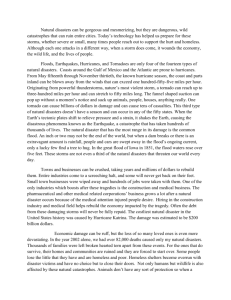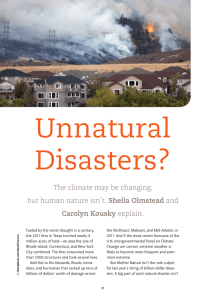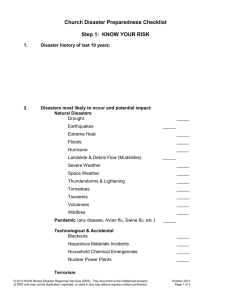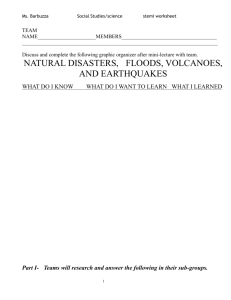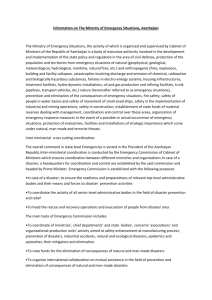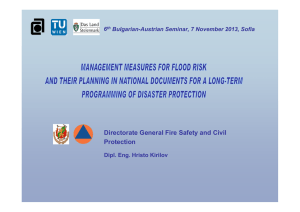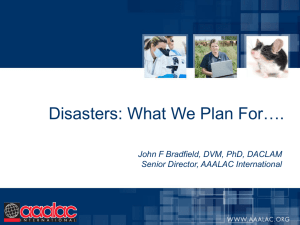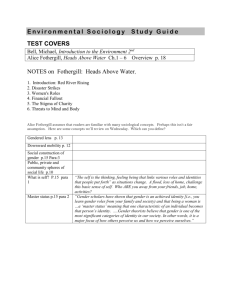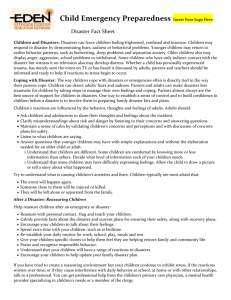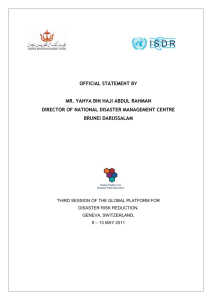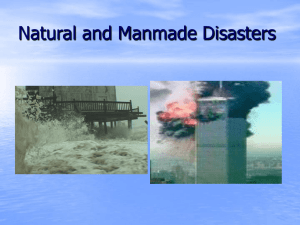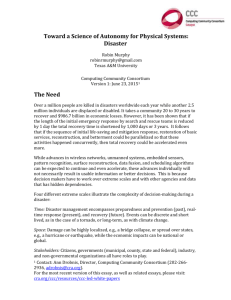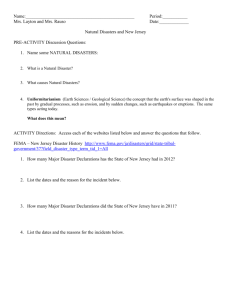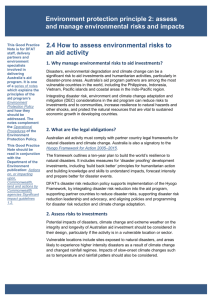presentation by nadmo – 2011 - Northern Region Agricultural
advertisement
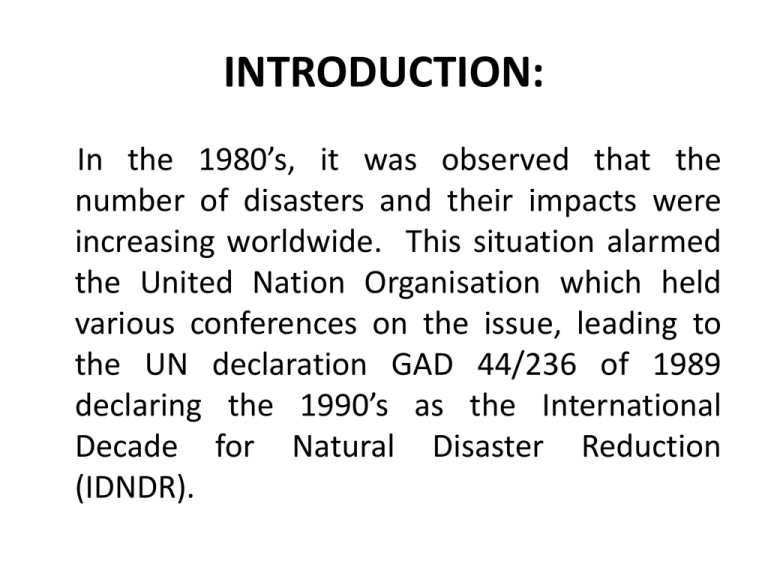
INTRODUCTION: In the 1980’s, it was observed that the number of disasters and their impacts were increasing worldwide. This situation alarmed the United Nation Organisation which held various conferences on the issue, leading to the UN declaration GAD 44/236 of 1989 declaring the 1990’s as the International Decade for Natural Disaster Reduction (IDNDR). This was followed by the conference on Natural Disaster Reduction held in Yokohama, Japan in May 1994. The conference established the International Strategy For Disaster Reduction (ISDR) to replace the defunct IDNDR. The Yokohama strategy for a “safe world” and its plan of action mandated each country to establish a permanent disaster management organization. BACKGROUND: National Disaster Management Organisation (NADMO) was established by Act 517 of 1996 to manage disasters and similar emergencies in the country. It was structured and placed under the Ministry of the Interior, to enable it coordinate all the relevant civil authorities at the national, regional and district levels. NADMO functions under a National Secretariat, ten (10) regional secretariats one hundred and thirty-eight (138) metropolitan, municipal and district secretariats and nine hundred (900) zonal offices throughout the country. MANDATE: NADMO exists to manage disasters by coordinating the resources of government institutions and non-governmental agencies and developing the capacity of communities to respond effectively to disasters and improve their livelihood through social mobilization, employment generation and poverty reduction projects. TYPES OF HAZARDS/DISASTERS: 1. Hydro-meteorological: Floods, Windstorm/Rainstorm, Drought and Tidal Waves. 2. Pest/Insect infestation: Armyworm, Anthrax, Blackfly, Locust, Larger Grain Borer etc. 3. Geological: Earthquake, Tsunamis, Mudslides Landslides etc. 4. Fires and lightning: Bush/wildfires and Domestic and Industrial fires and lightning. 5. Disease epidemics: Cholera, Yellow Fever, Cerebrospinal Meningitis (CSM). 6. Man-made: Social conflicts, Collapse of buildings, Mines, Aviation, Marine and Railway disasters, Dam burst and Oil spillage, etc. FLOOD PRONE AREAS: MUNICIPALITY/DISTRICT FLOOD PRONE COMMUNITIES GARU-TEMPANE DISTRICT Nomboko, Bugri, Kugri Senebaga, Kongo, Songo, Worikambo BOLGATANGA MUNICIPALITY Sawaba, Pobaga, Tindonsobligo, Kalbeo, Damweo, Anateem BONGO DISTRICT Ayelbia, Adaboya, Beo, Gowrie, Nyariga, Vea, Balungu BUILSA DISTRICT Sandema, Yipaala, Siniensi, Doninga, Kadema, Chansa, Asubalik, Wiesi Uwasi, Gbedembilisi BAWKU-EAST MUNICIPAL Mognori, Bazua, Bansi, Gentiga, Kulungugu, Tampizua, Nafkulga BAWKU-WEST DISTRICT Sapeliga, Galaka, Gozongo, Googo, Kobre, Yarigu, Saka, Zongoire FLOOD PRONE AREAS: MUNICIPAL/DISTRICT FLOOD PRONE COMMUNITIES TALENSI-NABDAM DISTRICT Pwalugu, Santeng, Yinduri, Datuku ,Vong, Winkogo-Kular zone KASSENA-NANKANA WEST DISTRICT Gwonum, Agumayane, Akurugu Dabour, Kyilo, Nakolo-Bugan, Bagtua KASSENA-NANKANA EAST DISTRICT Naaga, Pungu, Kolgo, Manyoro, Natugnia EFFECTS OF FLOODS: - Loss of life - Injury - Damage to and destruction of property - Damage to and destruction of subsistence and cash crops - Disruption of production - Disruption of life style/rhythm of life - Damage to infrastructure - Disruption of government system - Economic loss - Sociological and psychological after effects SOME STATISTICS: YEAR NO. OF COLLAPSED HOUSES NO. OF DISPLACED PEOPLE NO. OF DEATHS 2007 19,244 109,367 34 338 9,085 14 2008 2009 2010 HOW RELEVANT ARE MAPS IN DISASTER RISK MANAGEMENT: 1. In identifying safe havens 2. In doing hazard assessment - Causes: Is it related to the topography? - Location 3. In doing vulnerability assessment - Why are people vulnerable? Is it in relation to their location, land use etc 4. In doing capacity assessment - What assets do they have highlands, lowlands, etc 5. In structural mitigation – structural measures being applied for disaster mitigation, example; road and transportation development, Hydroelectric projects, bridges, etc NADMO, PREVENTION PAYS! THANK YOU!

